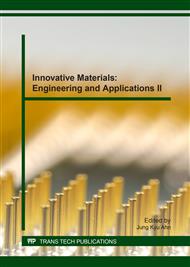p.563
p.569
p.574
p.580
p.587
p.595
p.601
p.607
p.613
Evaluation of Transfer Wicking Behavior of Fibrous Material Ensembles Used by Wildland Firefighters
Abstract:
Moisture is widely recognized as one of the most important factors that influencing thermal comfort and thermal protective performance of firefighters. In this study, it was aimed to investigate the effect of liquid moisture on the transfer wicking behavior from the wet underwear fabric to the dry outerwear layer within two-layer fabric assemblies, which is typically used by wildland firefighters. The obtained results indicated that the transfer wicking behavior between the entire two-layer clothing systems selected is not very obvious. Results indicated that the transfer wicking ratio was low 5 percent of water content initially held in wet fabric. The greater amount of liquid water initially held in two-layer fabric assemblies, the greater the amount of water transferred. The effect of moisture level on air permeability of bi-layer fabric constructions associated with thermo-physiological comfort properties was also investigated. Results show that the air permeability of multilayer fabrics decreased with an increase of moisture content. Compared to having no water, the air permeability reduced to 50 percent when the water content reached up to 70%. The perception gained from this work could serve as technical basis for further development of high-performance firefighter protective clothing.
Info:
Periodical:
Pages:
595-600
Citation:
Online since:
February 2017
Authors:
Price:
Сopyright:
© 2017 Trans Tech Publications Ltd. All Rights Reserved
Share:
Citation:


